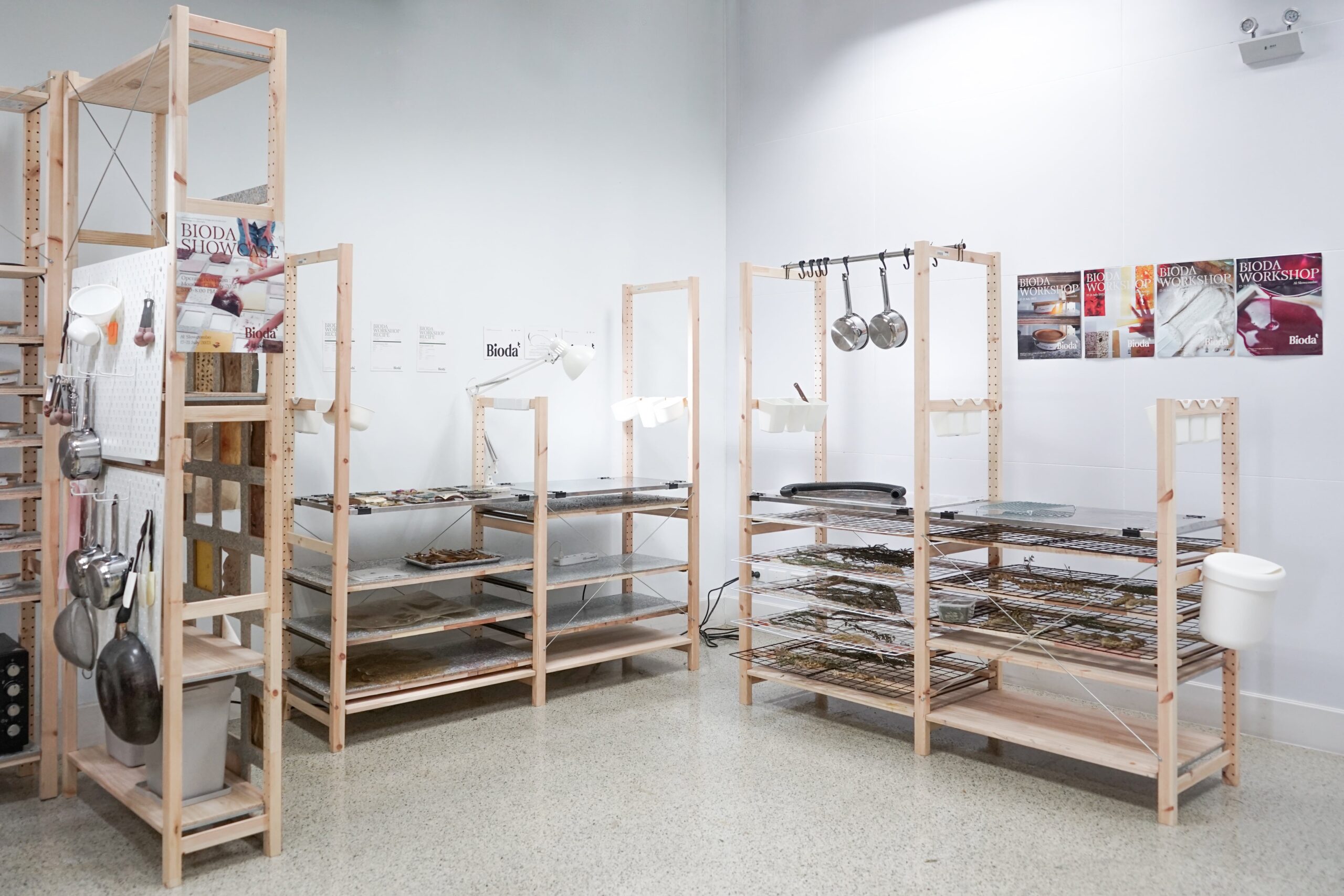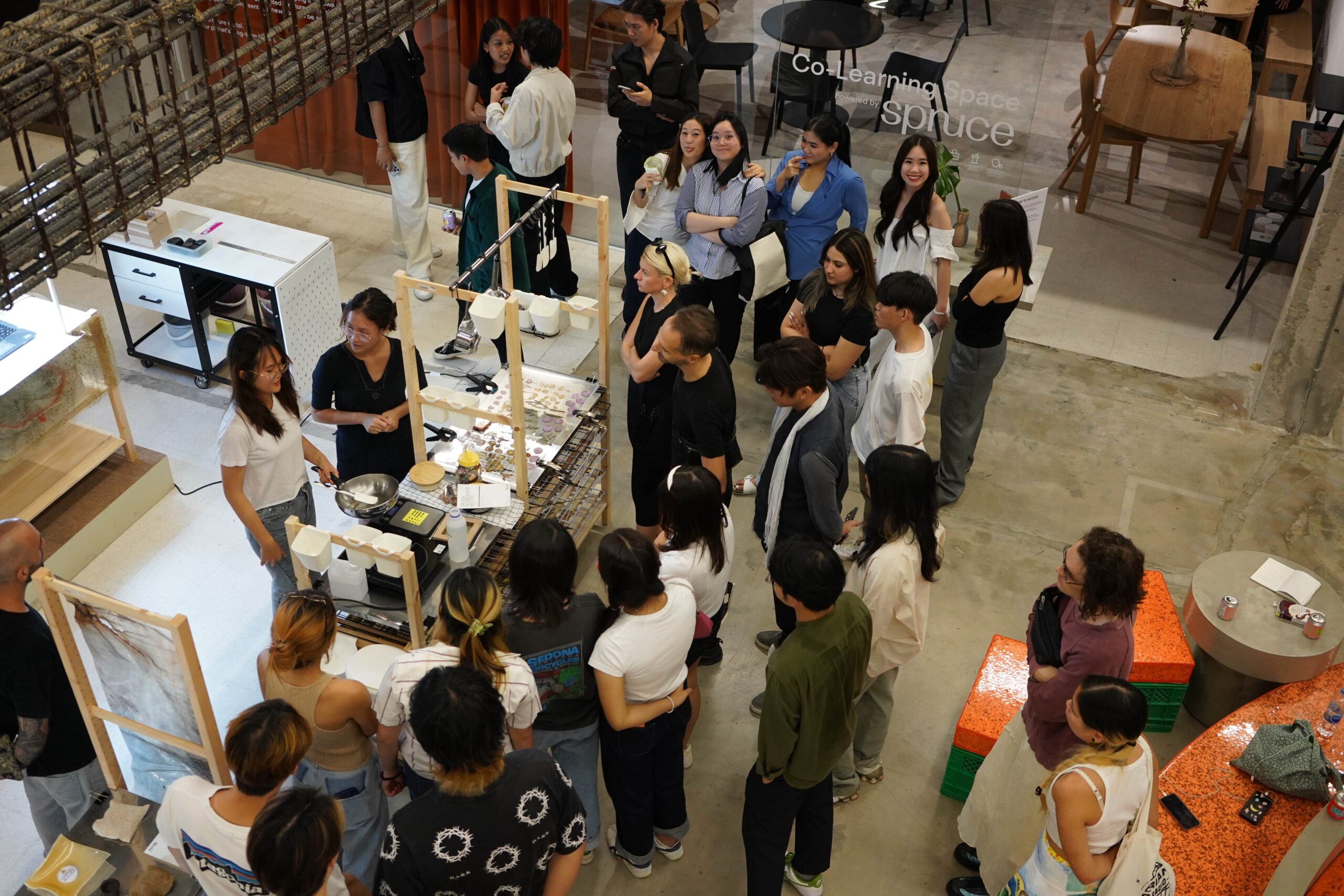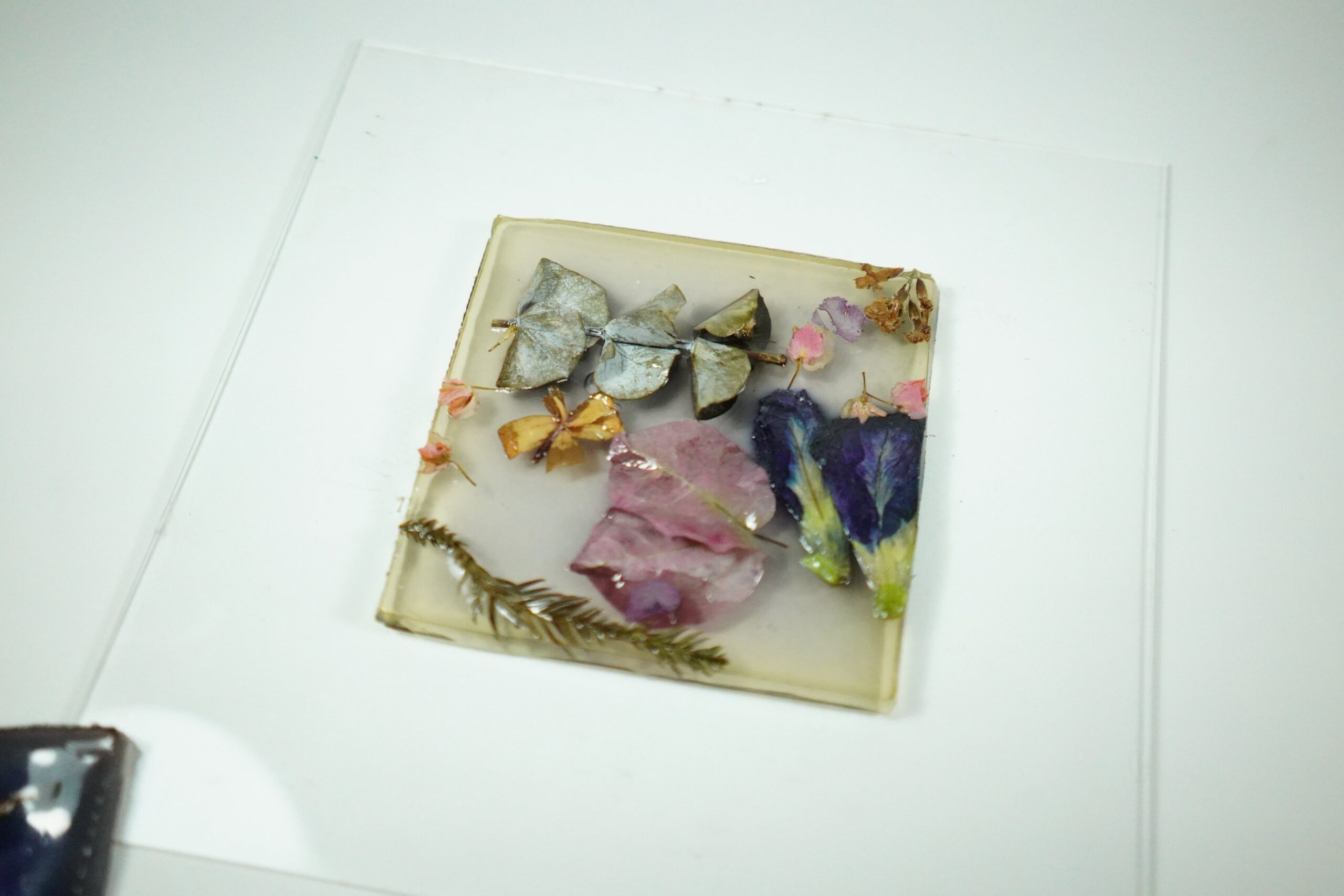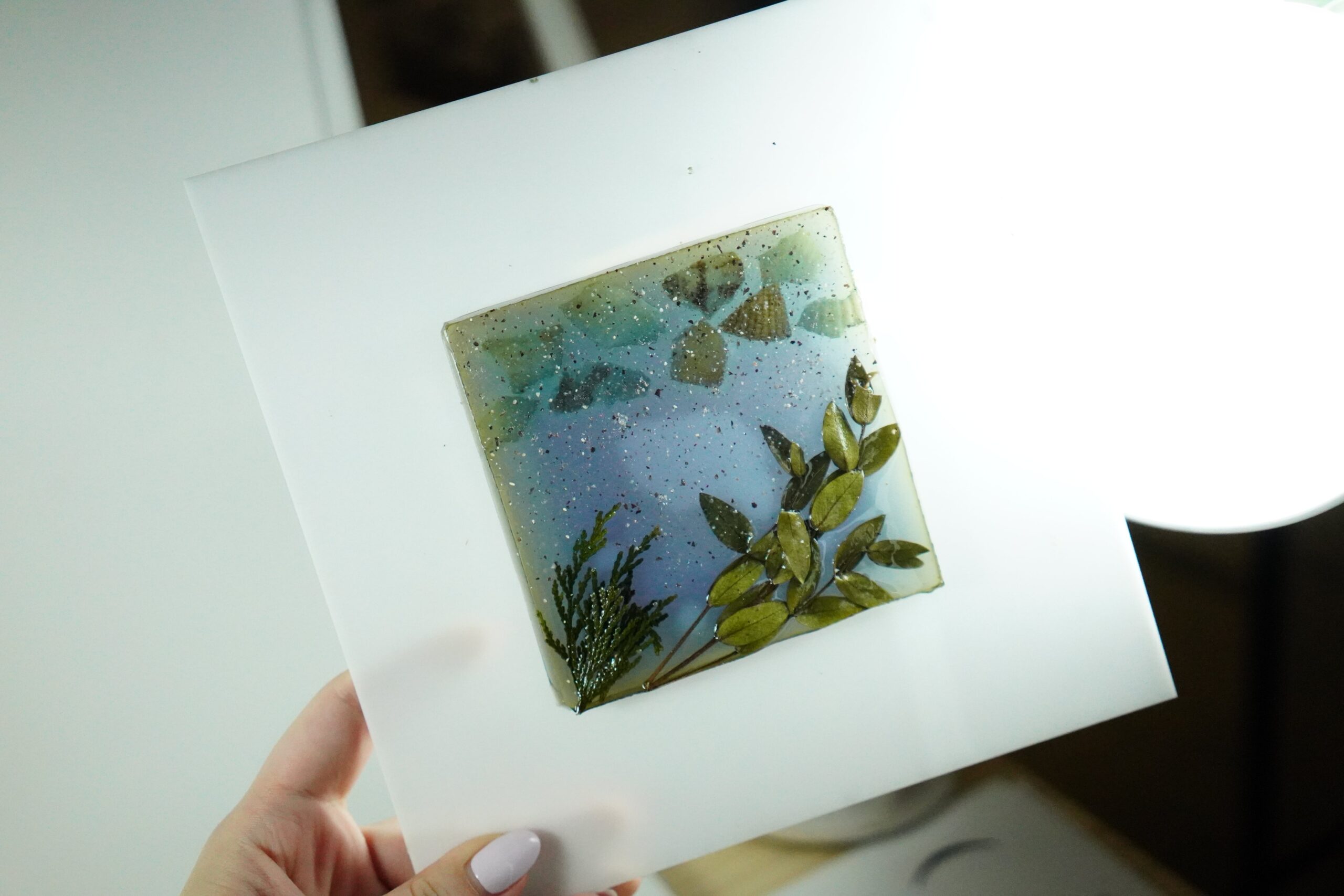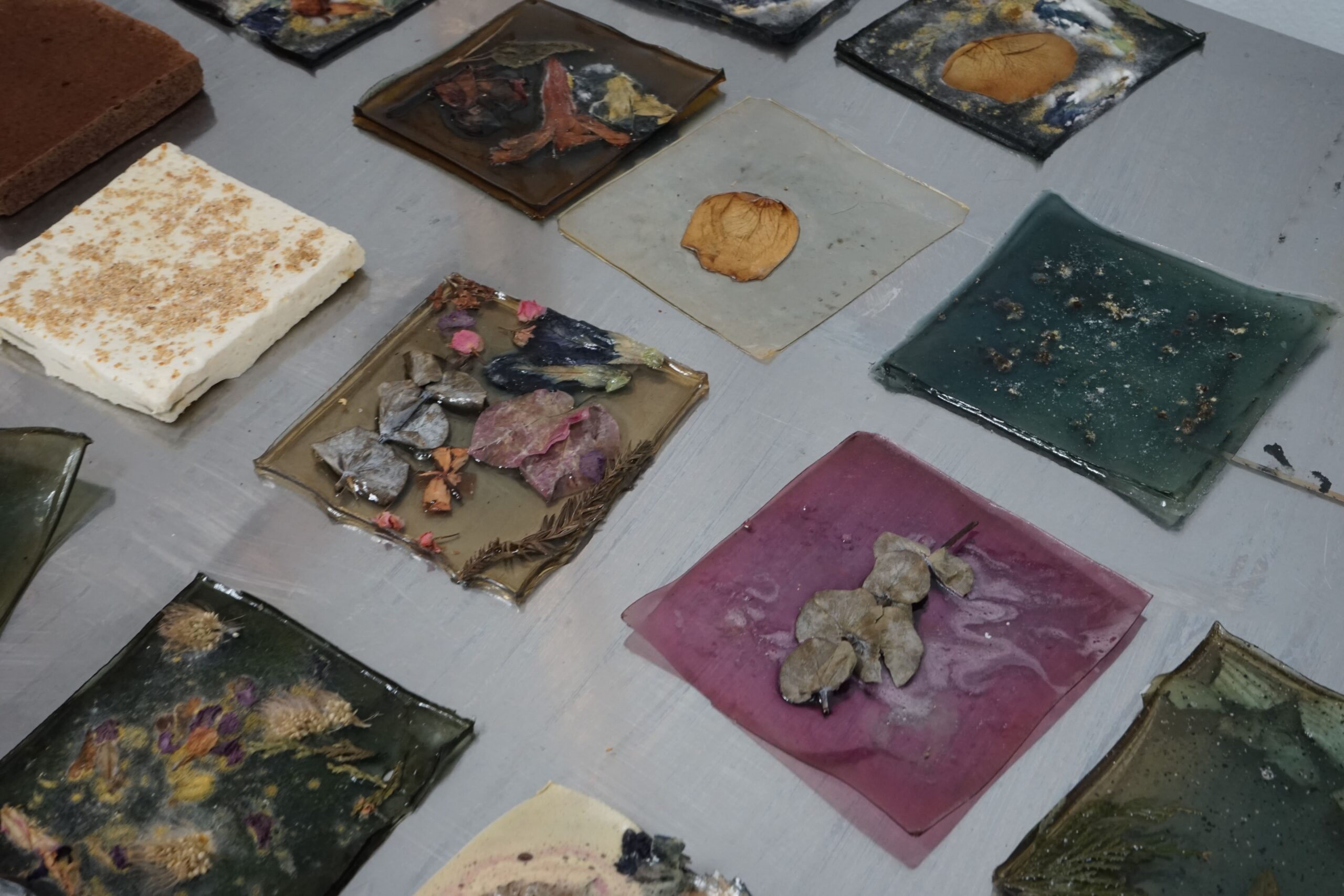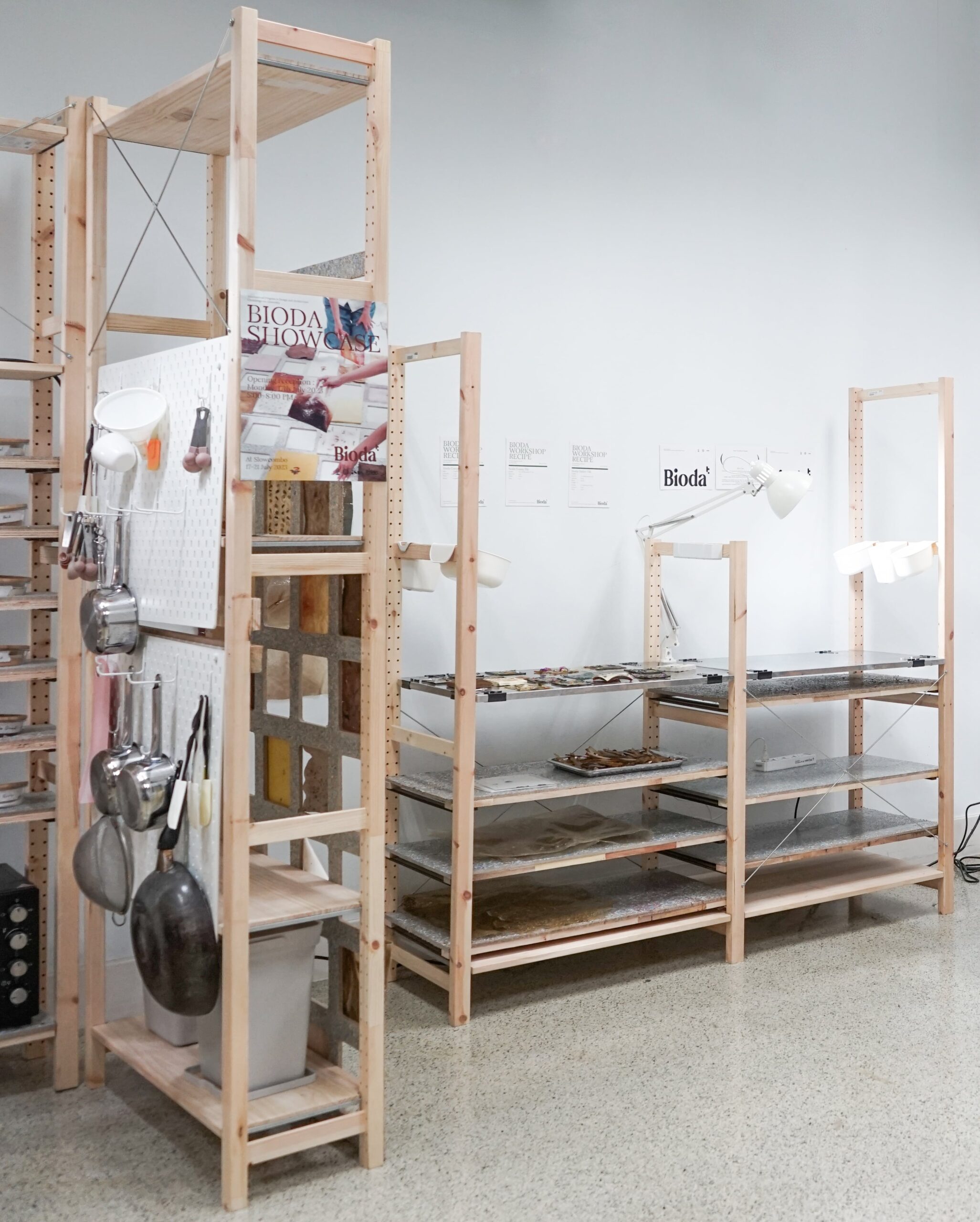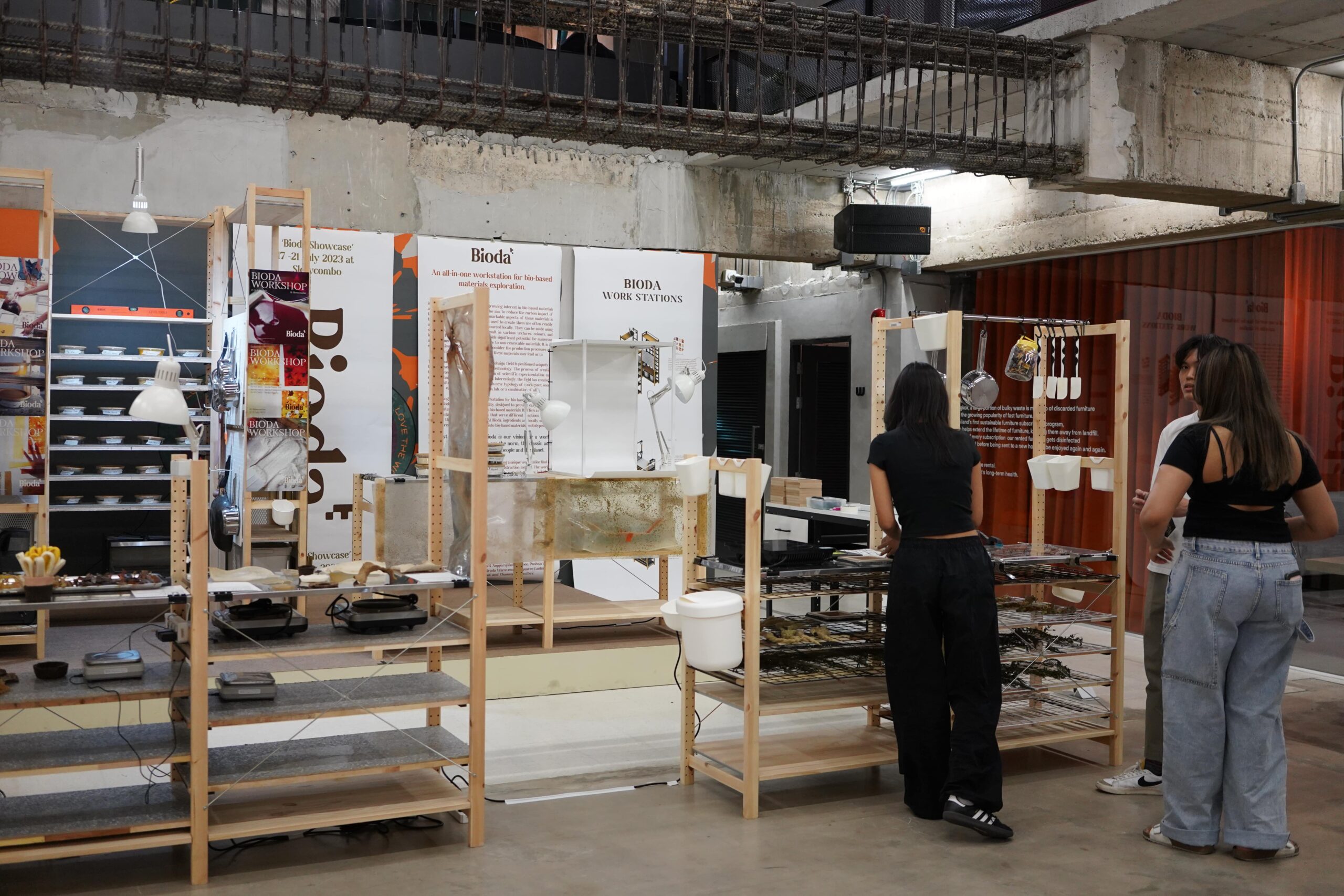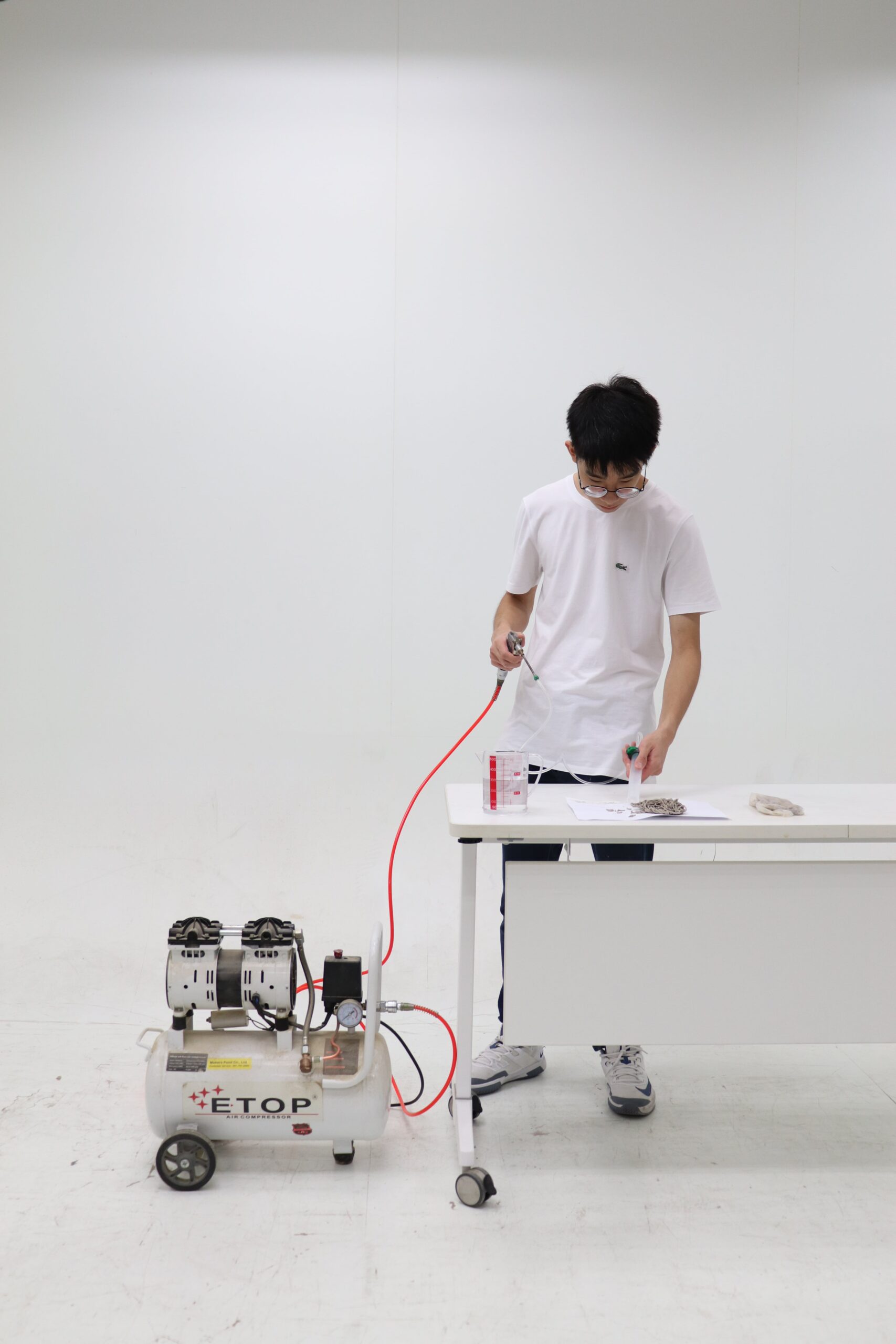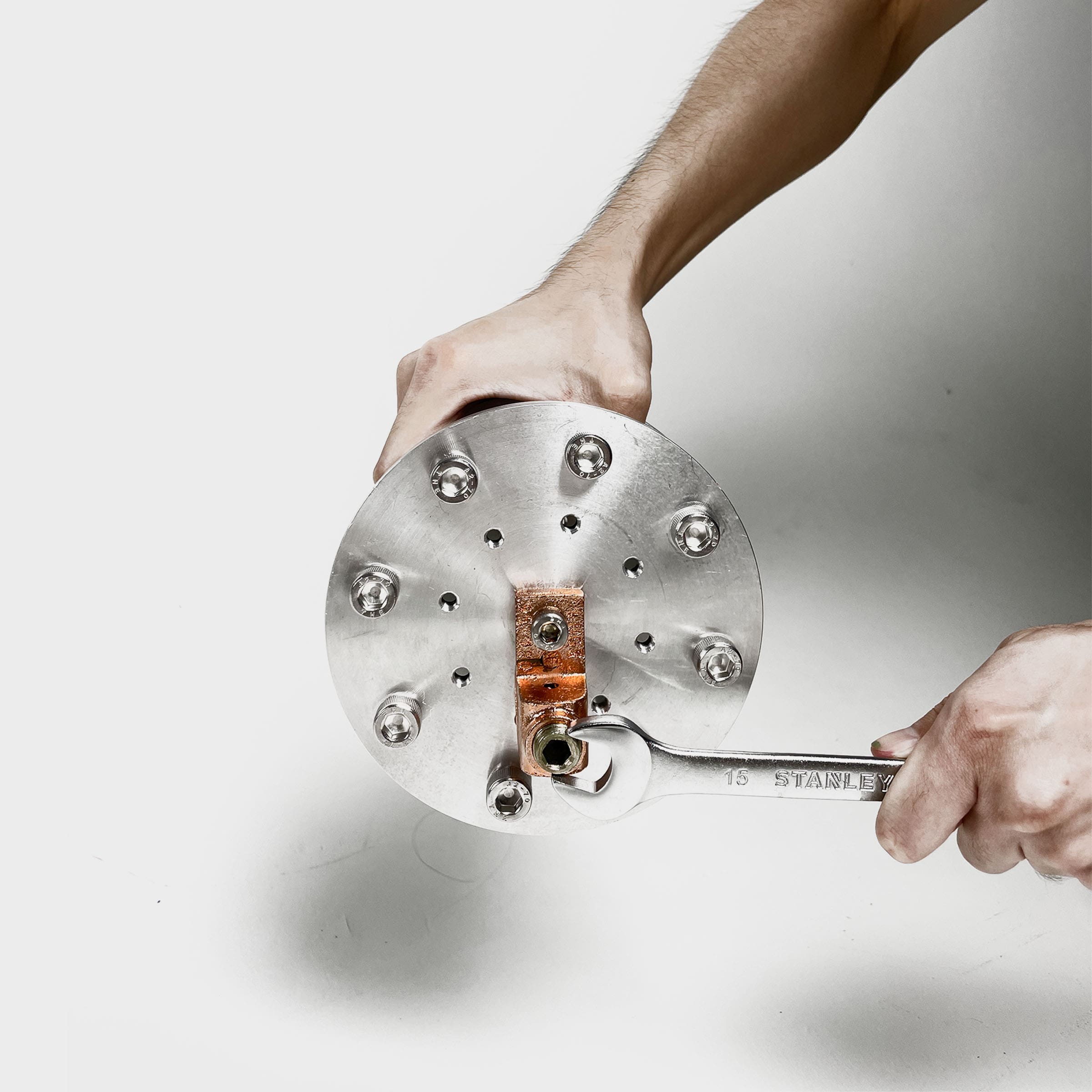Bioda is an operational facility designed to provide easy access to anyone interested in working with bio-based materials. It offers a range of fundamental tools and ingredients that serve different functions at each stage of the fabrication process. At Bioda, ingredients are locally sourced and ready to be transformed into bio-based materials prototypes.
More than just a workstation, Bioda represents our vision for a world where bio-based materials are the norm, the classic, and the preferred choice for both people and the planet. Our mission begins with designing and building a unique workstation that is versatile and accessible through the DIY construction method. The workstation showcases the integration of multiple materials systems, including an affordable IKEA shelving unit, custom design with ENVIRO board (a composite board made from discarded milk cartons), and handmade Bioda tiles.
